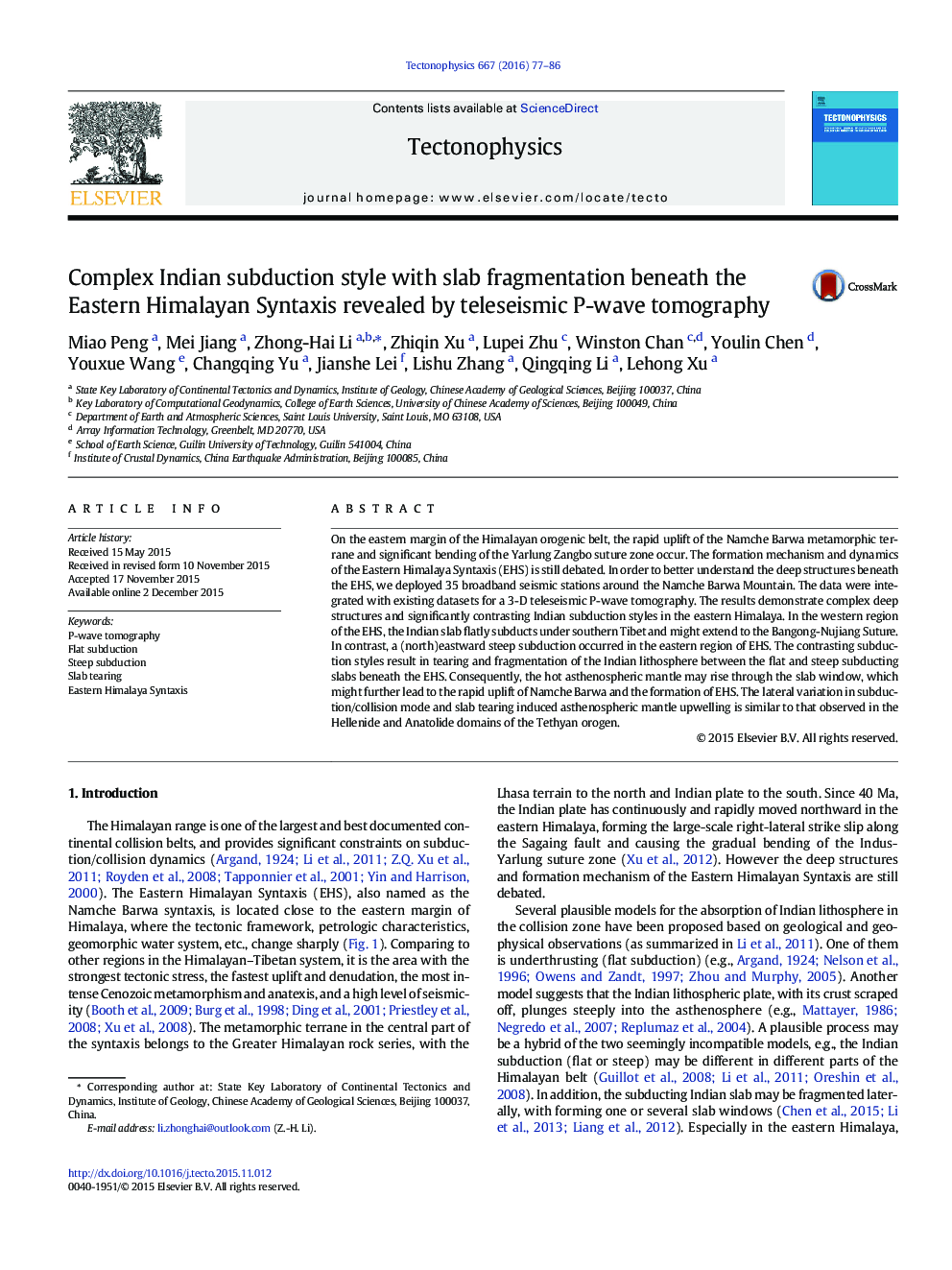| Article ID | Journal | Published Year | Pages | File Type |
|---|---|---|---|---|
| 4691405 | Tectonophysics | 2016 | 10 Pages |
•A 3-D teleseismic P-wave tomography of the Eastern Himalayan Syntaxis•Contrasting subduction modes (flat versus steep) in the eastern Himalaya•Tearing of the subducting Indian slab and upwelling of the hot asthenospheric mantle
On the eastern margin of the Himalayan orogenic belt, the rapid uplift of the Namche Barwa metamorphic terrane and significant bending of the Yarlung Zangbo suture zone occur. The formation mechanism and dynamics of the Eastern Himalaya Syntaxis (EHS) is still debated. In order to better understand the deep structures beneath the EHS, we deployed 35 broadband seismic stations around the Namche Barwa Mountain. The data were integrated with existing datasets for a 3-D teleseismic P-wave tomography. The results demonstrate complex deep structures and significantly contrasting Indian subduction styles in the eastern Himalaya. In the western region of the EHS, the Indian slab flatly subducts under southern Tibet and might extend to the Bangong-Nujiang Suture. In contrast, a (north)eastward steep subduction occurred in the eastern region of EHS. The contrasting subduction styles result in tearing and fragmentation of the Indian lithosphere between the flat and steep subducting slabs beneath the EHS. Consequently, the hot asthenospheric mantle may rise through the slab window, which might further lead to the rapid uplift of Namche Barwa and the formation of EHS. The lateral variation in subduction/collision mode and slab tearing induced asthenospheric mantle upwelling is similar to that observed in the Hellenide and Anatolide domains of the Tethyan orogen.
Graphical abstractFigure optionsDownload full-size imageDownload as PowerPoint slide
